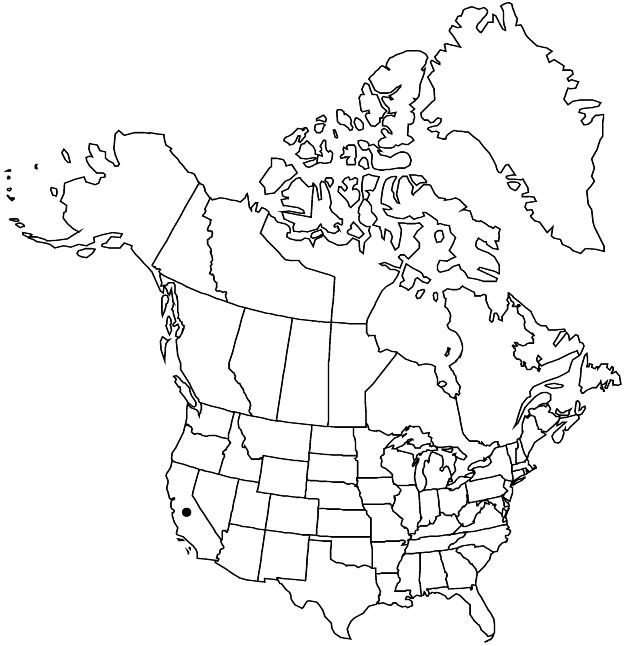Malacothamnus jonesii
Leafl. W. Bot. 6: 135. 1951.
Shrubs, 1–2.5 m, branches slender, flexuous, indument white, usually velvety, not shaggy, stellate hairs stalked, sometimes sublepidote, ca. 10–30-armed, glandular-hairs often abundant. Leaf-blades ash green, ovate, ± rhombic, or suborbiculate, unlobed or 3-lobed or 5-lobed, 2.5–4.5 (–7) cm, thin to thick, surfaces: soft tomentose-white, adaxial pale ash green, white-velvety, basal sinus open, not overlapping. Inflorescences open-paniculate or subracemose, flower clusters pedunculate, loose, 3 (–6) -flowered, or solitary flowers; involucellar bractlets awl-shaped to filiform, 2.5–7 (–8) × 1 mm, 1/3–1/2 (–2/3) calyx length. Flowers: calyx campanulate, not angled in bud, 5–9 (–10) mm, lobes distinct in bud, narrowly triangular or deltate-lanceolate, 3–6 (–7.5) × 1.5–3 (–4) mm, length 2 times width, equaling to 3 times tube length, apex acute to short-acuminate, usually sublepidote to tomentose, hairs 10–30-armed, sometimes densely lanate; petals pale-pink, to 1 cm. Mericarps 2.5–3.8 mm. 2n = 34.
Phenology: Flowering late Apr–Jun.
Habitat: Open chaparral, foothill woodlands
Elevation: 200–900 m
Discussion
Malacothamnus jonesii is known from the central Coast Ranges.
Selected References
None.
